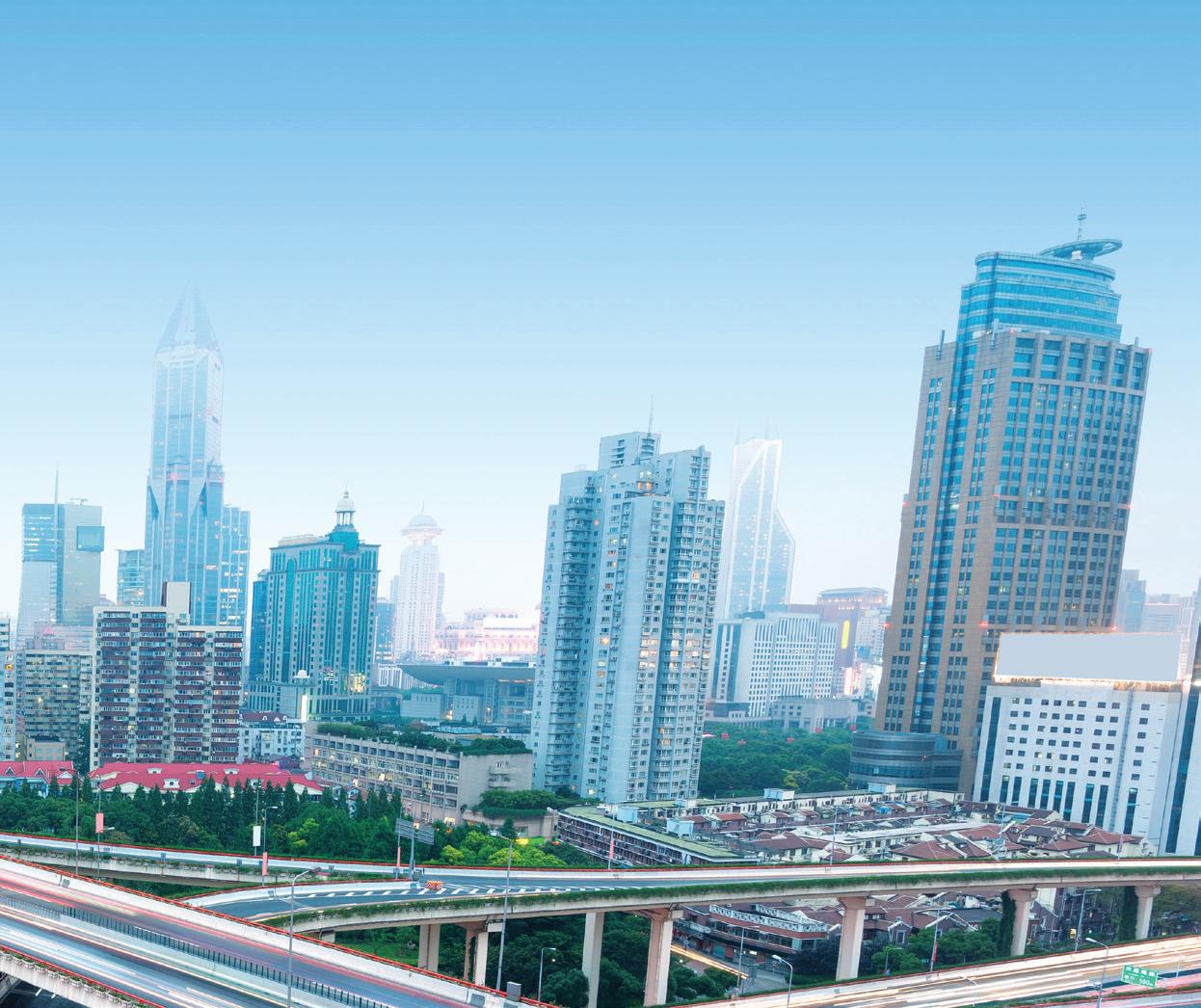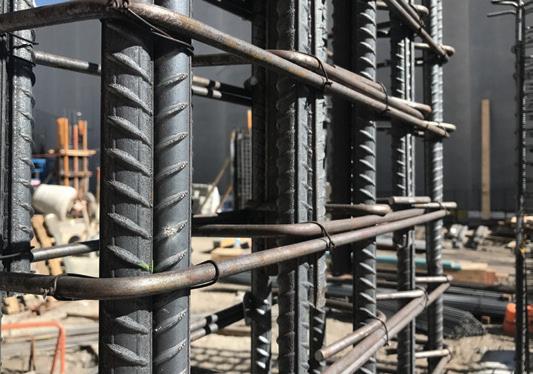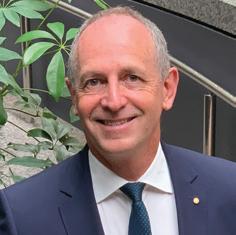
5 minute read
DIGITAL INFRASTRUCTURE
HOW INFRASTRUCTURE PROJECTS CAN EFFICIENTLY USE VIRTUAL TWIN EXPERIENCES
All construction projects are expected to be delivered on time and on budget, but real value comes when asset owners can save money and create efficiencies across the whole asset lifecycle. With the industry now managing construction in a digital world, Virtual Twin Experience technology is allowing companies to spot mistakes virtually before construction starts, and collaborate remotely with all stakeholders using one source of data that can be used throughout construction, operation and maintenance.
Advertisement
While ‘digital transformation’ might be a buzzword for many industries, the fact is that technologies such as BIM and 3D modelling have enormous potential to reduce costs and increase efficiency on large infrastructure projects.
Prashanth Mysore, Global Strategic Business Development and Industry Marketing Director at Dassault Systèmes – a global leader in 3D design and engineering software – said the infrastructure sector is conservative compared to other industries when it comes to digital technologies because of long project lifecycles, but there is huge potential for cost savings using processes like Virtual Twin Experiences.
“In infrastructure, we work with large projects and budgets which can be very complex, so if people make errors in the field, the cost of fixing them is huge,” Mr Mysore said.
“The benefit of Virtual Twin Experiences is that we can simulate everything first in a virtual environment. We virtually build the whole project with 3D software so we can forecast all the issues and risks you might face in the field. If an error is made in the digital environment, it's easier to fix and the cost will be very low. In this way, we can make sure that the real construction can be successful in one shot.”
It’s also common in infrastructure for design changes to occur even once construction has begun. If 2D drawings are used there is potential for mistakes
to occur and it takes time to update designs manually, as well as analyse what these changes could mean for the project. However, 3D models can be updated faster and simulations can be run to view all possible scenarios.
Mr Mysore said that when talking about Virtual Twin Experiences, it’s important to recognise that at Dassault Systèmes it doesn’t just mean a 3D simulation of the final asset, but also simulations of all the processes used to build it.
“Our 3DEXPERIENCE platform is a lifecycle management system. We not only include the 3D model, but also the project information, simulations, and all of the data in one single source, which can be put on the cloud,” Mr Mysore said.
COLLABORATION REGARDLESS OF LOCATION
While spotting errors and making changes early can avoid major delays and additional costs, having a Virtual Twin Experience as the management system also creates a collaboration platform for all stakeholders working on a project.
In Australia, there are a large number of joint ventures and consortiums where different companies are working on the same infrastructure project. The advantage of having a Virtual Twin Experience is that these companies can collaborate and access the same single source of master data remotely.
With more companies working remotely and hosting virtual meetings as a result of the COVID-19 pandemic, communication has to be extremely clear for everyone involved. Mr Mysore said the 3DEXPERIENCE platform is a very supportive mechanism for current conditions as it connects everyone in different locations and different time zones so they can work together.
“Everyone with authorisation will be able to access the information no matter where they are. It allows everyone on the project to be on the same page and always have access to the latest information because they are all working on the same platform with a single data source,” Mr Mysore said.
Dassault Systèmes’ 3DEXPERIENCE platform is currently being used in a number of major projects including the Danjiang bridge in Taiwan, Beijing Daxing Airport, and the 370km Mu-Jia line railway project by the China Railway Design Corporation (CRDC), to name a few. The technology is also now available in the Australian market.
The Mu-Jia line rail project involved a designer in one city and multiple construction companies responsible for different parts of the railway distributed in different locations along the 370km track.
Using the 3DEXPERIENCE platform meant that if the designer made any changes, it automatically synchronised with all the contractors in different locations, keeping everyone informed and up to date.

USING DIGITAL TWINS ACROSS THE ENTIRE LIFECYCLE
One of the benefits of a Virtual Twin Experience is that it is not only used in the design and construction phases, but also for the asset’s operation and maintenance. While the construction company’s job is to deliver the infrastructure, asset owners will also be thinking about future operations.
“One way to think about a Virtual Twin Experience is that it’s alive, and the information will grow with a project into the operation phase. If we imagine we operated projects for 50 or 100 years, there will be a lot of information and you’ll want to keep all this historical data with the 3D model so that you can optimise efficiency and save costs, so all of this information is part of our Virtual Twin Experience,” Mr Mysore said.
Now asset owners are often asking for two project outcomes – the real built asset and the virtual asset. Being able to deliver both will help construction companies build good relationships and get future work as they are delivering continuous value. By optimising operational costs throughout the lifecycle, the benefits significantly outweigh the costs of adopting the new technology at the start.
Dassault Systèmes’ 3DEXPERIENCE platform also proved invaluable when COVID-19 hit as it produced a 3D simulation solution for Leishenshan Hospital in Wuhan that looked at HVAC systems and air flow to determine how infectious molecules might spread throughout the hospital in order to protect healthcare workers and patients. The project was highly praised by the hospital owner as well as the local government, and now Dassault has more hospitals asking to use the same technology in their projects.
While other systems may also use the cloud, Akio Moriwaki, Construction, Cities & Territories Industry Marketing Director at Dassault, said its 3DEXPERIENCE platform is different because it provides a single source of data that is always up to date.
“Some solutions just connect to the server, then you have to upload and download again, so the model is not really managing one single source of truth, but ours is integrated and the single master model is always up to date for everyone, which is a pretty important aspect for a Virtual Twin Experience solution,” Mr Moriwaki said.
For more information on how Virtual Twin Experiences can benefit your infrastructure project or Dassault’s 3DEXPERIENCE platform, please visit https://ifwe.3ds.com/ construction-cities-territories.










